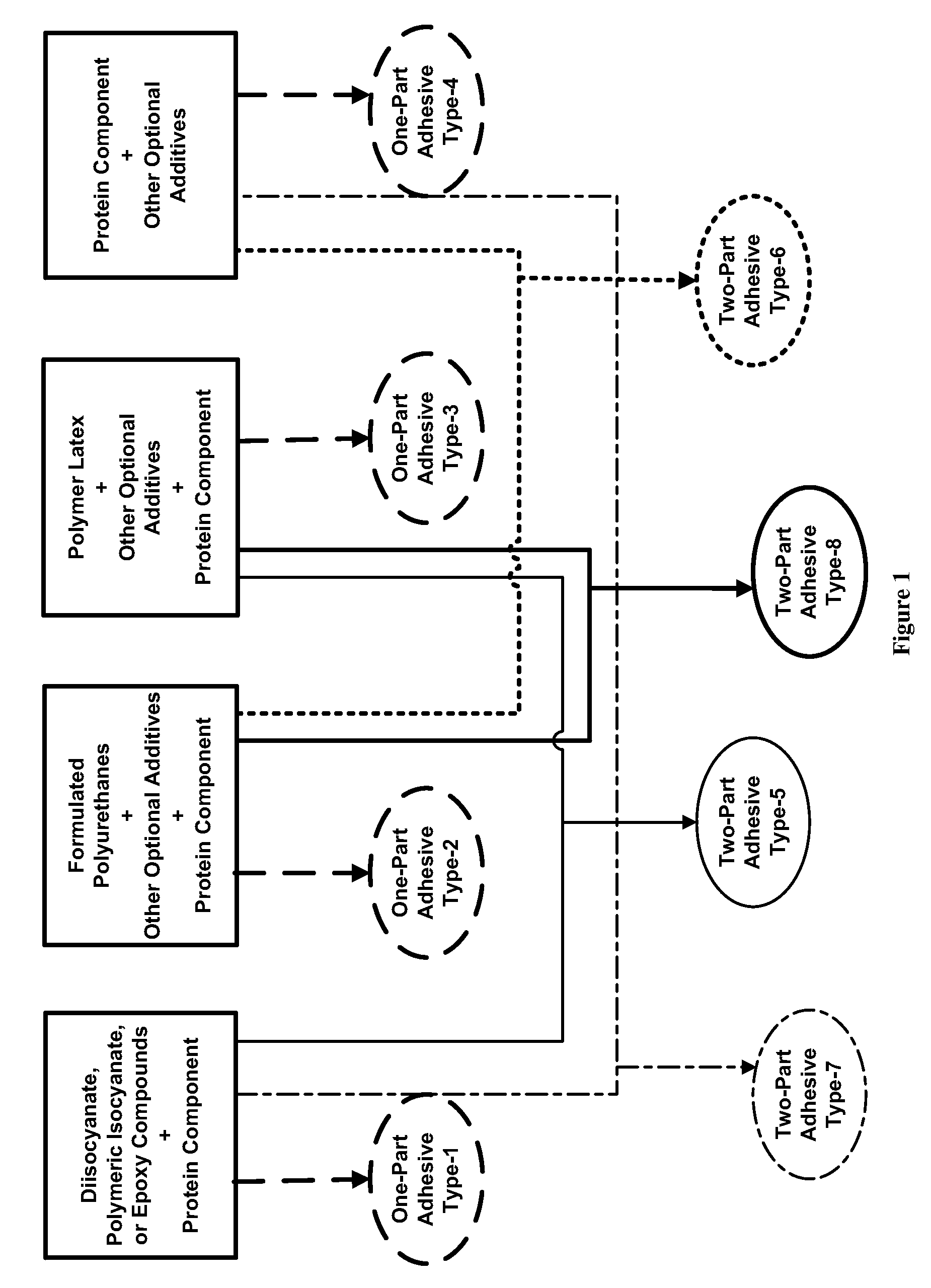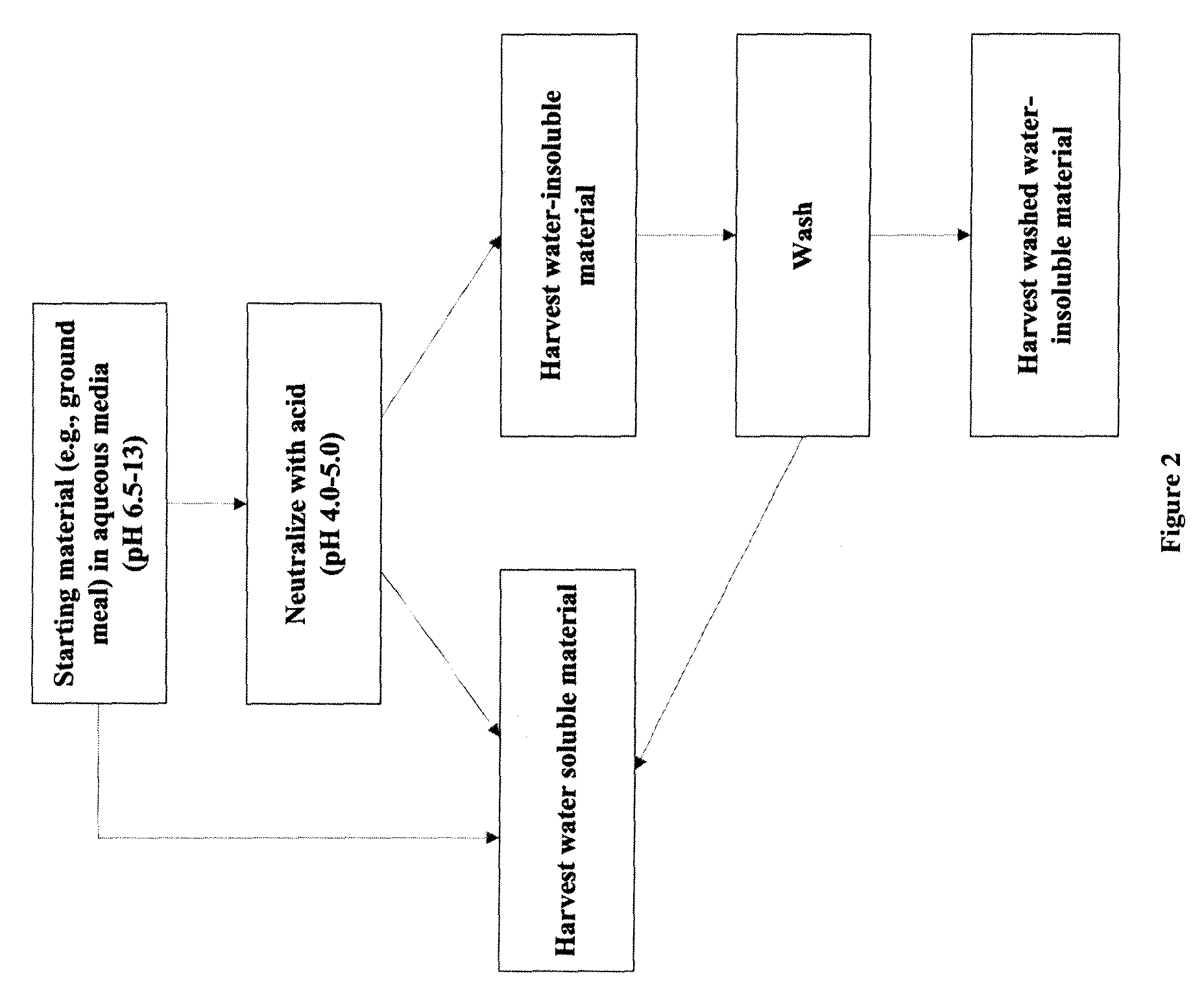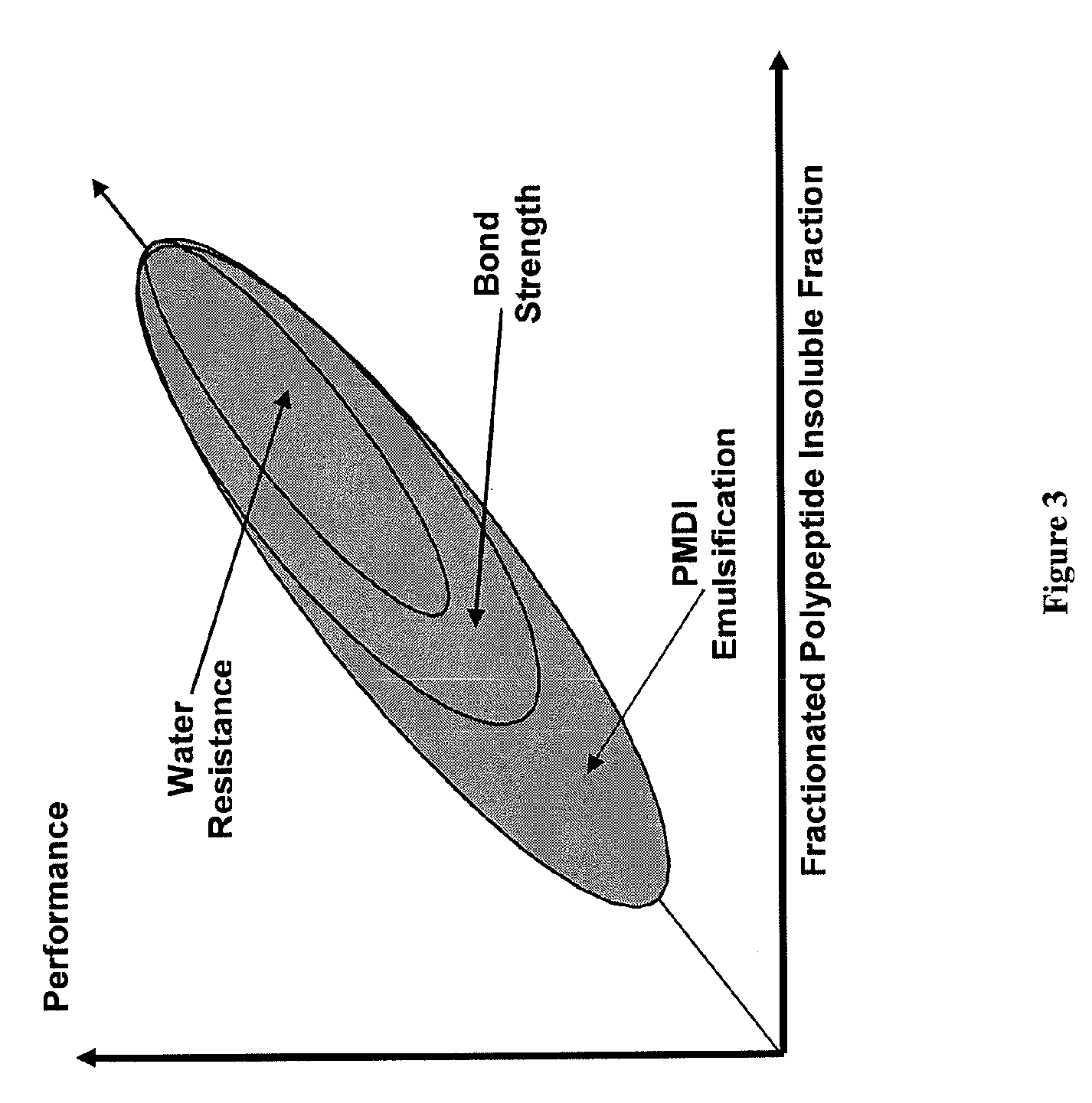Protein-containing adhesives, and manufacture and use thereof
a technology of adhesives and proteins, applied in the field of protein adhesives, can solve the problems of toxic chemical and volatile formaldehyde, and achieve the effect of reducing the amount of preolymer needed and contributing to the performance of the adhesiv
- Summary
- Abstract
- Description
- Claims
- Application Information
AI Technical Summary
Benefits of technology
Problems solved by technology
Method used
Image
Examples
example 1
Particle Board Prepared from Adhesive Comprising Ground Canola Meal or Ground Soy Meal
[0299]Particle board was prepared using western pine wood particles and ground plant meal adhesive. Samples of particle board were tested for water resistance by placement in boiling water for one hour.
[0300]Preparation of Adhesive:
[0301]Multiple Adhesive Compositions were Prepared by Mixing ground plant meal (either ground canola meal or ground soy meal having a particle size range of from about 20 μm to about 70 μm, water, urea, and, in certain instances one or more of glycerin, corn syrup, and polybutene. Components used in the various adhesives are identified in Table 2 below. Except for sample nine, all adhesive compositions contained PMDI.
[0302]
TABLE 2ADHESIVE COMPOSITIONSComponents of the Adhesive CompositionWet Adhesive AddedGroundCornMealto Wood ParticlesMealWaterGlycerinUreaPMDISyrupPBE*SampleType(g)(g)(g)(g)(g)(g)(g)(g)1Soy72.7012.6341.1209.479.47002Soy63.5810.1934.48011.647.27003Soy75.6...
example 2
Isolation of Polypeptide Compositions
[0317]Exemplary procedures for isolating and characterizing the water-insoluble polypeptide composition, water-soluble polypeptide composition, or a mixture thereof are described below.
Procedure A: Preparation of Water-Insoluble Polypeptide Composition and Preparation of Water-Soluble Polypeptide Composition.
[0318]Everlase digested protein from castor (experimental sample lot 5-90) was obtained from Prof. S. Braun at the Laboratory of the Department of Applied Biology at the Hebrew University of Jerusalem, Israel. Digested castor can be prepared as follows: castor meal protein is suspended in water at the ratio of about 1:10 w / w. Calcium chloride is added to an effective concentration of about 10 mM, and the pH of the suspension adjusted to pH 9 by the addition of 10 N NaOH. The reaction is then heated to 55° C. while stirring. Next, Everlase 16 L Type EX® (NOVOZYMES') is added at the ratio of 20 g per kg of castor meal protein, and the mixture i...
example 3
Characterization of Polypeptide Compositions by Mass Spectrometry
[0345]This Example describes characterization of the various protein samples via MALDI Mass Spectrometry using an Ultraflex III instrument from Bruker.
[0346]The instrument was set in positive mode, in order to detect positive ions generated during the ionization process. The voltage applied to accelerate the ion into the TOF analyzer was set at 25 KV. The analysis was carried out by using the instrument in reflection mode which improves the resolution. Solid samples were dissolved in DMSO at a concentration of 10 mg / mL. Water-soluble supernatant fractions which were solvated in water.
[0347]Each sample solution was mixed with a matrix solution (for analytical purposes). The matrix was an inert compound of low molecular weight which absorbs at the same wavelength of the laser, Nd:YAG 355 nm. The matrices used were: α-CHCA, alpha-cyano-4-hydroxycinnamic acid, dissolved in a solution of ACN / H2O (70:30) with 0.1% of TFA at ...
PUM
| Property | Measurement | Unit |
|---|---|---|
| particle size | aaaaa | aaaaa |
| particle size | aaaaa | aaaaa |
| temperatures | aaaaa | aaaaa |
Abstract
Description
Claims
Application Information
 Login to View More
Login to View More - R&D
- Intellectual Property
- Life Sciences
- Materials
- Tech Scout
- Unparalleled Data Quality
- Higher Quality Content
- 60% Fewer Hallucinations
Browse by: Latest US Patents, China's latest patents, Technical Efficacy Thesaurus, Application Domain, Technology Topic, Popular Technical Reports.
© 2025 PatSnap. All rights reserved.Legal|Privacy policy|Modern Slavery Act Transparency Statement|Sitemap|About US| Contact US: help@patsnap.com



